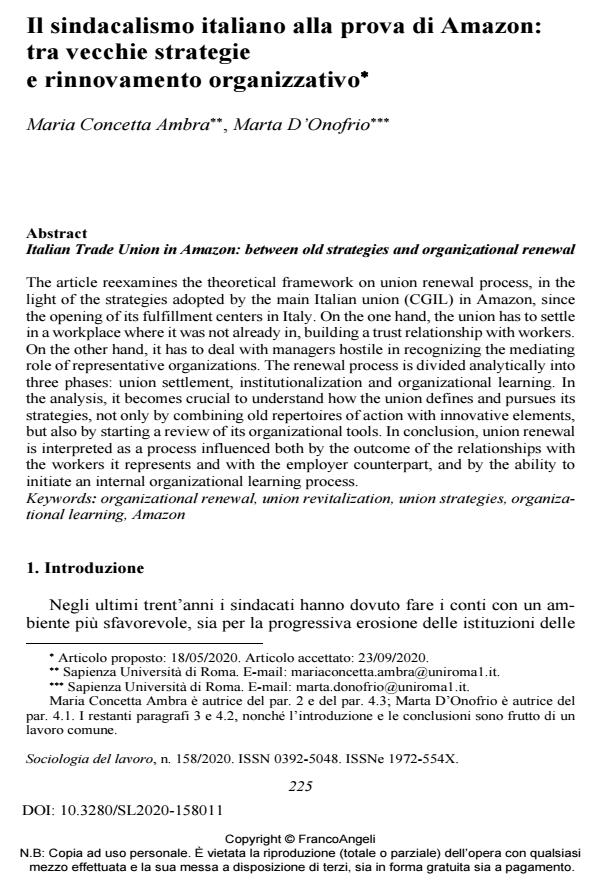Italian Trade Union in Amazon: between old strategies and organizational renewal
Journal title SOCIOLOGIA DEL LAVORO
Author/s Maria Concetta Ambra, Marta D’Onofrio
Publishing Year 2020 Issue 2020/158
Language Italian Pages 18 P. 225-242 File size 226 KB
DOI 10.3280/SL2020-158011
DOI is like a bar code for intellectual property: to have more infomation
click here
Below, you can see the article first page
If you want to buy this article in PDF format, you can do it, following the instructions to buy download credits

FrancoAngeli is member of Publishers International Linking Association, Inc (PILA), a not-for-profit association which run the CrossRef service enabling links to and from online scholarly content.
The article reexamines the theoretical framework on union renewal process, in the light of the strategies adopted by the main Italian union (CGIL) in Amazon, since the opening of its fulfillment centers in Italy. On the one hand, the union has to settle in a workplace where it was not already in, building a trust relationship with workers. On the other hand, it has to deal with managers hostile in recognizing the mediating role of representative organizations. The renewal process is divided ana-lytically into three phases: union settlement, institutionalization and organizational learning. In the analysis, it becomes crucial to understand how the union defines and pursues its strategies, not only by combining old repertoires of action with in-novative elements, but also by starting a review of its organizational tools. In con-clusion, union renewal is interpreted as a process influenced both by the outcome of the relationships with the workers it represents and with the employer counter-part, and by the ability to initiate an internal organizational learning process.
Keywords: Organizational renewal, union revitalization, union strategies, organ-izational learning, Amazon
Maria Concetta Ambra, Marta D’Onofrio, Il sindacalismo italiano alla prova di Amazon: tra vecchie strategie e rinnovamento organizzativo in "SOCIOLOGIA DEL LAVORO " 158/2020, pp 225-242, DOI: 10.3280/SL2020-158011